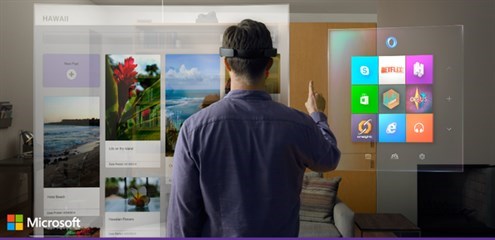What wearables like the Microsoft HoloLens mean for design and UX

To say it came as a surprise would perhaps be underplaying it, but amidst all the announcements around Windows 10, Microsoft revealed a device which caused a few rumbles in the technology world with HoloLens.
Coming after the oohs and aahs caused by gadgets like Google Glass and the Oculus Rift, the HoloLens could be considered as something between the two in offering augmented reality with virtual 3D imaging.
You see the real world in front of you, with images and objects overlaid. And because the HoloLens tracks where you are, it can allow you to use hand gestures to interact with the 3D images.
It seems like a natural extension of Kinect, but instead of tracking where you are, it tracks what's around you.
And VR developers have already thought about the possibilities of turning any room into a virtual environment - think about playing platform games on your furniture, or games with characters standing full-size in front of you.
What does this mean for design and UX?
Technology like the Microsoft HoloLens will have a major impact on design and user experience, with a renewed focus on intricate visuals and typography.
The Internet of Things (IoT) will usher new complications for designers and UX experts. There will be a greater demand for data visualisation to make sense of the surge of information advanced connected devices like VR and AR headsets provide.
And it was only a little while ago it seems that gesture control was given with computer mice and keyboards - multiple devices outside the traditional computing paradigm is a different thing entirely.
Wearables are convenient control devices, rather than consumption interfaces like smartphones. People will be using devices like the HoloLens and Oculus Rift to communicate and control rather than simply consume.
Wearable technology is still in its early days, but brands that ignore this type of technology will be left behind.
For more insights on the latest marketing trends, see our Marketing Trends report.

